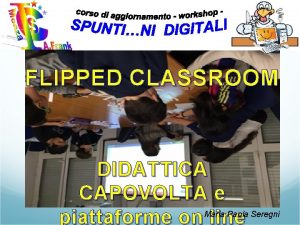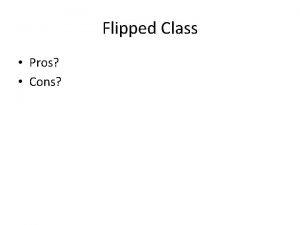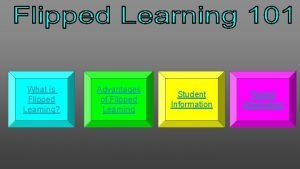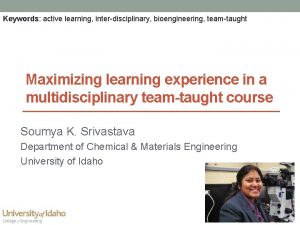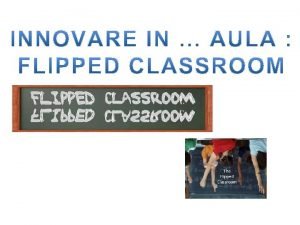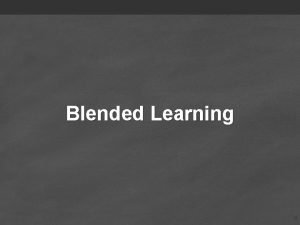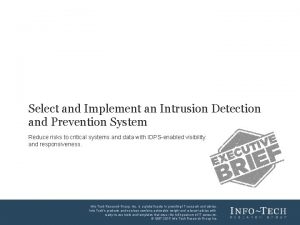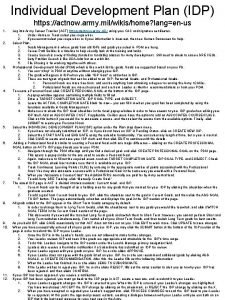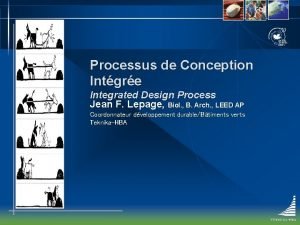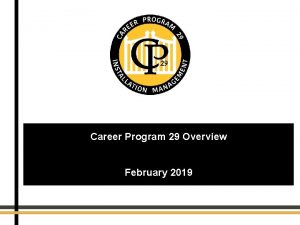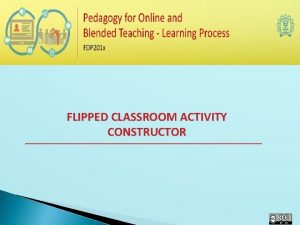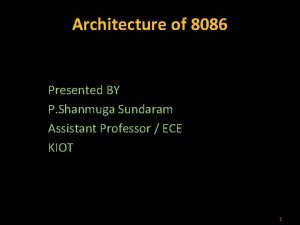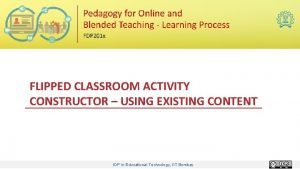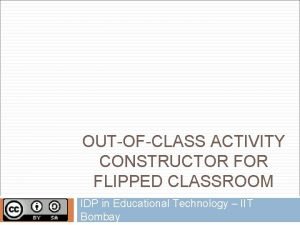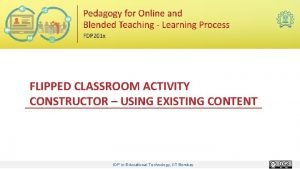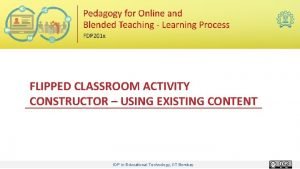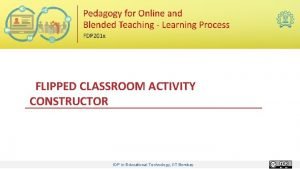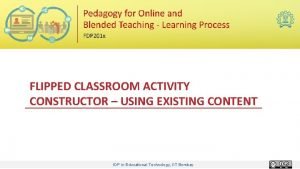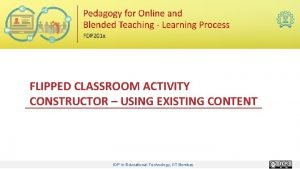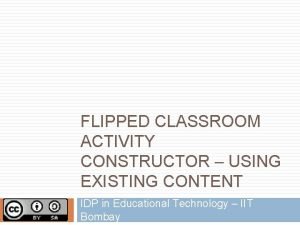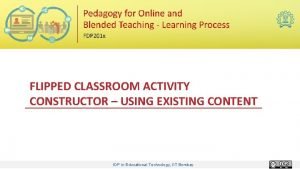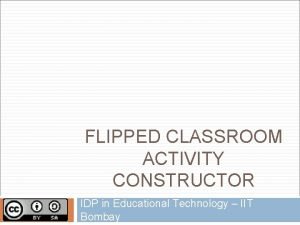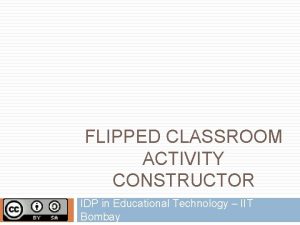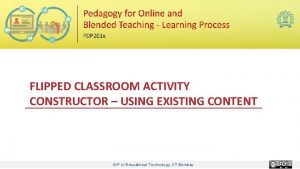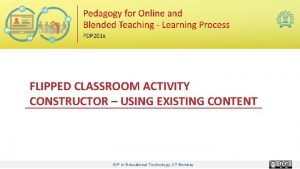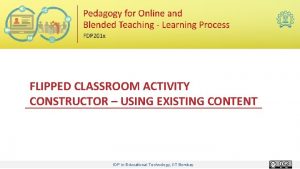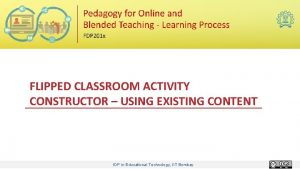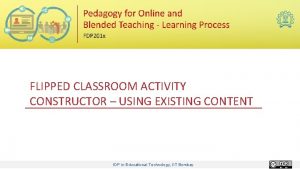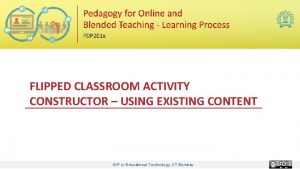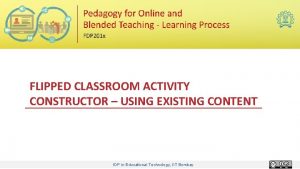FLIPPED CLASSROOM ACTIVITY CONSTRUCTOR P Shanmuga Sundaram IDP






















- Slides: 22

FLIPPED CLASSROOM ACTIVITY CONSTRUCTOR – P. Shanmuga Sundaram IDP in Educational Technology, IIT Bombay

Table of Contents SECTION SLIDE # ABOUT YOU OUT-OF-CLASS SEGMENT IN-CLASS SEGMENT EVALUATION 4 7 19 22 COMMUNITY BUILDING IDP in Educational Technology, IIT Bombay 2

About you P. Shanmuga Sundaram Assistant Professor Department of ECE Knowledge Institute of Technology, Salem – 637 504, Tamilnadu Area of Interest: Image Processing and Embedded System Publications: International Journals: 5 International Conference : 12 IDP in Educational Technology, IIT Bombay 3

P. SHANMUGA SUNDARAM FUNDAMENTALS OF EMBEDDED SYSTEMS ELECTRICAL IV-Year B. E. (ECE) ANNA UNIVERSITY IDP in Educational Technology, IIT Bombay 4

Out-of-class Segment This section helps us to design the Out-of-Class segment of Flipped Classroom Strategy. IDP in Educational Technology, IIT Bombay 5

Out-of-class Activity Design -1 Learning Objective(s) of Out-of-Class Activity 1. Understanding Basics of Embedded System 2. Understanding of Various Processors Key Concept(s) to be covered Embedded, Programming, Basics of Processors IDP in Educational Technology, IIT Bombay 6

Out-of-class Activity Design-1 Learning Objective(s) of Out-of-Class Activity At the end of watching the videos student should be able to § § § Able to classify the Embedded system (Apply Level) Explain the Functionality of various Processor(Understand Level) Using various Processor executing basic Programs (Apply Level) Key Concept(s) to be covered § § Basic Embedded system classification Determine the functionality of various embedded Processors IDP in Educational Technology, IIT Bombay 7

Guidelines for Video Selection - 1 § First check in National Repositories • § NPTEL Videos (http: //www. nptelvideos. in/2012/11/embedded-systems. html) Second Look in International Repositories • OCW Consortium • https: //www. youtube. com/watch? v=TA-_Zw 8 Vv 3 o https: //www. youtube. com/watch? v=y 9 RAh. Ef. Lf. Js&list=PL 31539 C 19 B 4673 C 07 • IDP in Educational Technology, IIT Bombay 8

Guidelines for Video Selection - 1 § Third Look in Internet Video Repositories (filter for Creative Commons License) • Youtube https: //www. youtube. com/watch? v=n_0 lg. YGSFL 4 https: //www. youtube. com/watch? v=dc. Nk 0 ur. Qs. QM IDP in Educational Technology, IIT Bombay 9

Out-of-class Activity Design - 2 Main Video Source URL http: //www. nptelvideos. in/2012/11/embedded-systems. html License of Video CC-BY-SA (reuse allowed) Mapping Concept to Video Source CONCEPT VIDEO SEGMENT DURATION (in min) Basic of Embedded System (Lecture Video 1) V 1 - 0: 00 – 4: 21 V 1 – 4: 25 – 10: 30 6: 05 V 1– 11: 00 – 12: 20 1: 20 V 2 – 02: 10 – 3: 20 1: 10 V 3 -05: 00 -07: 33 2: 33 V 4 -04: 00 -05: 27 1: 27 Functionality of Various Processor (Lecture video 1) Applications (Lecture video 2) IDP in Educational Technology, IIT Bombay TOTAL DURATION 57. 35 min 10

Out-of-class Activity Design - 3 Aligning Assessment with Learning Objective Can Identify and classify the Embedded system Assessment Strategy Expected Duration (in min) Additional Instructions (if any) 10 minutes Watch V 1 and then answer Q 1 Watch V 1, V 2 and then answer Q 2 Q 1. How Processor receives an input and how it process Q 2. Basic Input and Output Devices IDP in Educational Technology, IIT Bombay 11

Out-of-class Activity Design - 3 Aligning Assessment with Learning Objective Assessment Strategy Functionality Q 1. Differentiate between of various Microprocessor and Processor Microcontroller Expected Duration (in min) Additional Instructions (if any) 10 minutes Watch V 2 and then answer Q 1 Total activity duration 30 minutes IDP in Educational Technology, IIT Bombay 12

About In-Class Segment § Make sure that In-Class segment contain activities for effective learning • • • § § § In active learning student goes beyond listening, copying of notes. Execution of prescribed procedures. Students are required to talk, write, reflect and express their thinking. Engage students in higher-order thinking (Analyze-Evaluate-Create). Ensure that students get feedback on their work, either from peers or you. Ensure to provide summary that connects Out-of-Class and In-Class activities. IDP in Educational Technology, IIT Bombay 13

In-class Activity Design -1 Learning Objective(s) of In-Class Activity At the end of the class, students will be able to, § § Write and program for glowing the LED Light(APPLY Level) Analysis and Simulate whether the given program can be execute (Analysis Level) Key Concept(s) to be covered § Using simulation software (Proteus) execution of basic programs. § Analyses and verify the simulation for various applications. IDP in Educational Technology, IIT Bombay 14

In-class Activity Design -2 Active Learning activity(ies) that you plan to do 1. Think-Pair-Share Explain the strategy by giving details of 1. Flipped Class and Face to Face Interaction 2. Peer Interaction Justify why the above is an active learning strategy 1. Peer Interaction with think and Pair 2. Allowed the students make debate among peer group IDP in Educational Technology, IIT Bombay 15

In-class Activity Design -2 Peer Instruction Strategy – What Teacher Does Q 1: What will happen in a Embedded system when multiple input is applied Ø Embedded System Answer for all inputs simultaneously Ø Embedded System Answer on priority basis Ø Embedded System will not Answer IDP in Educational Technology, IIT Bombay 16

In-class Activity Design -2 Peer Instruction Strategy – What Teacher Does Q 2: Can we make the Interrupt in wait state 1. No we cant make it in wait state 2. If it is an Maskable interrupt we can make it in wait state 3. Yes we can keep it in wait state EXAMPLE IDP in Educational Technology, IIT Bombay 17

In-class Activity Design -2 From the given program calculate the square wave frequency at port 1 #include <reg 51. h> // include 8051 register file sbit pin = P 1^0; // decleare a variable type sbit for P 1. 0 main() { P 1 = 0 x 00; // clear port TMOD = 0 x 09; // initialize timer 0 as 16 bit timer loop: TL 0 = 0 x. AF; // load valur 15535 = 3 CAFh so after TH 0 = 0 x 3 C; // 50000 counts timer 0 will be overflow pin = 1; // send high logic to P 1. 0 TR 0 = 1; // start timer while(TF 0 == 0) {} // wait for first overflow for 50 ms TL 0 = 0 x. AF; // again reload count TH 0 = 0 x 3 C; pin = 0; // now send 0 to P 1. 0 while(TF 0 == 0) {} // wait for 50 ms again goto loop; // continue with the loop } IDP in Educational Technology, IIT Bombay EXAMPLE 18

In-class Activity Design -2 TPS Strategy – What Instructor does Think (~2 minutes) Instruction: Assume and calculate the frequency Think individually and identify the scenario of square wave and help them to calculate the frequency IDP in Educational Technology, IIT Bombay 19

In-class Activity Design -2 TPS Strategy – What Instructor does Pair (~5 minutes) Instruction: Pair the students and instructor goes to 2~3 sections to see what they are doing. Based on the timer property ask the students solve IDP in Educational Technology, IIT Bombay 20

TPS Strategy Share (~8 minutes) Sharing views on timer and frequency calculations Ø The exact frequency generated was 10 HZ Asked students to compare the answers. In the share phase again the different answers are sought. IDP in Educational Technology, IIT Bombay 21

In-class Activity Design -2 Justify why the above is an active learning strategy v. Active Learning happened v. Even slow learners are actively participated with their peer member v. Class is full of noise, due to discussion by them v. Different approach of the answer were arrived by means of TPS IDP in Educational Technology, IIT Bombay 22
 Cosa prevede “inquiry flipped classroom”:
Cosa prevede “inquiry flipped classroom”: Flipped classroom schema
Flipped classroom schema Flipped classroom pros and cons
Flipped classroom pros and cons Flipped learning advantages and disadvantages
Flipped learning advantages and disadvantages Bioengineering active learning
Bioengineering active learning I promessi sposi flipped classroom
I promessi sposi flipped classroom Flipped classroom
Flipped classroom Beal moodle
Beal moodle Flipped classroom examples
Flipped classroom examples Abi sundaram
Abi sundaram Sundaram gunasekaran
Sundaram gunasekaran Hari sundaram
Hari sundaram Vishal sundaram
Vishal sundaram Integrated design project
Integrated design project Integrated design project civil engineering
Integrated design project civil engineering Juniper srx idp
Juniper srx idp Idp vsko
Idp vsko Bosch accredited contractor
Bosch accredited contractor Idp vendor landscape
Idp vendor landscape Idp army example
Idp army example Glipmpse
Glipmpse Idp coop
Idp coop Army career programs
Army career programs
